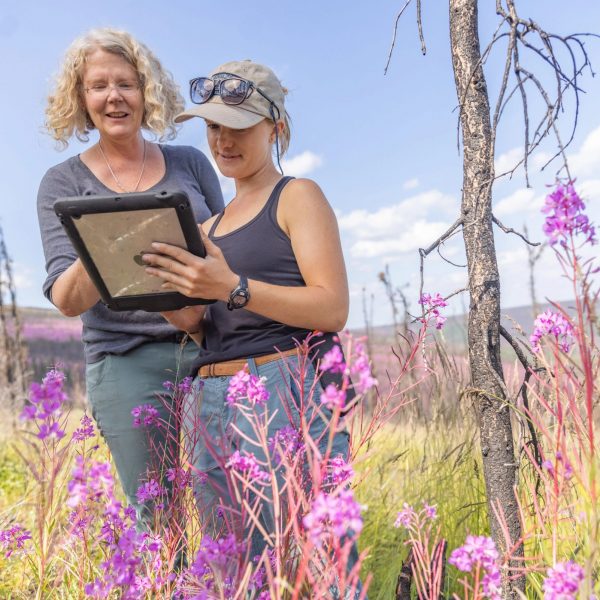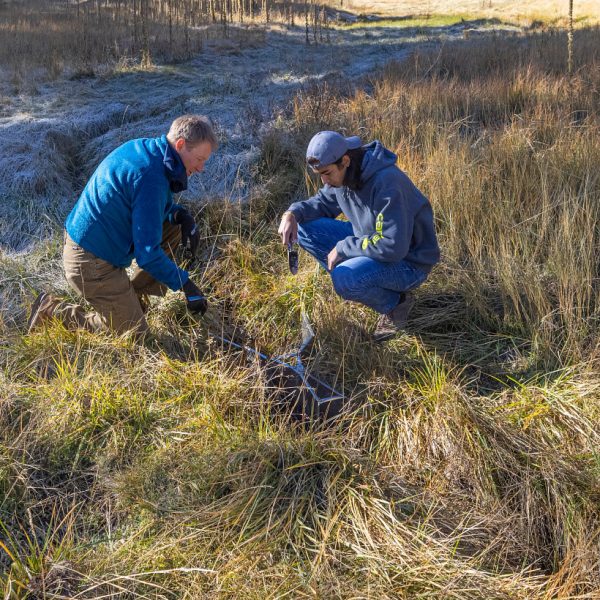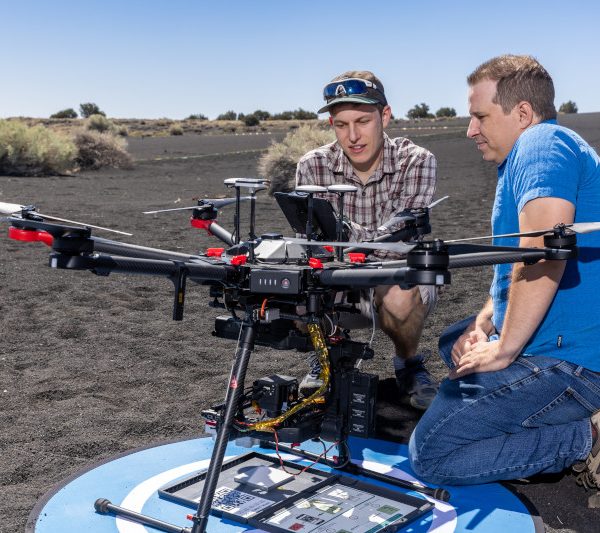Jason Ladner, an infectious disease specialist and Assistant Professor at NAU, and Jeff Lorch, a microbiologist at the US Geological Survey (USGS), apply their skills in genetics and wildlife ecology to a critical issue facing the health of US snake populations.
Snake fungal disease (SFD) is of emerging concern in the US, with parallels among other better-known wildlife fungal diseases such as white-nose syndrome in bats. To better understand SFD, a team of researchers including Jason Ladner and Jeff Lorch collaborated on the peer-reviewed paper, “The population genetics of the causative agent of snake fungal disease indicate recent introductions to the USA.” The research details their approach in determining whether SFD originated in the US or was introduced from outside the country, which could provide insight into management of the disease as well as a historical basis for how it emerged.
Snake fungal disease: a threat to wildlife
SFD can be deadly to snakes, and even in mild cases disrupts an animal’s ability to perform normal biological functions (such as hibernation, eating, and avoiding predators). Ladner and Lorch’s research is significant, as SFD is an only recently recognized issue in wildlife ecology. “Snake fungal disease first came to be recognized in the US around 2008. There happened to be a well-studied population of rattlesnakes in Illinois that started coming down with some very severe fungal infections. People asked, ‘OK, what is this thing? Where is it? What’s going on? Is this a new emerging fungal pathogen or not?’ What they eventually found was that it was already almost everywhere, at least in the eastern half of the US,” says Ladner.
SFD, though seemingly not as deadly as other wildlife fungal diseases, is still a worrying threat to animals that are an important part of the ecosystem. “We’re very concerned, not just about SFD’s effect to drive population declines, but also as a contributing factor amongst many other threats that snakes are already facing, like habitat destruction or over-collection for the pet trade,” Lorch says.
Ladner adds that understanding wildlife diseases is critical, both in the context of ecosystem health and in their potential effects on humans. “I have a lot of interest in wildlife diseases, partially because wildlife serve as important reservoirs for diseases that could potentially emerge in humans; COVID-19 is a great example of that. If we want to be prepared for the next emerging infectious disease in humans, we need to better understand the pathogens currently circulating in wildlife populations which may have the potential to be transmitted to humans,” says Ladner.
Mapping disease evolution
The study presented unique difficulties, however. “For snakes, there’s almost no long-term population trend data, especially when we compare snakes to an animal like bats, which have suffered from white-nose syndrome,” Lorch says. “In many states, historical data on bat populations exists because they’re not generally as difficult to monitor as some other types of wildlife.” Snakes, in contrast, “are pretty secretive animals. They’re not something that you probably see on the landscape routinely, unless you’re looking for them,” Lorch explains. Without a large body of historical data on North American snake populations, “it makes it hard to say what snake populations were doing before SFD was noticed. Long-term trends are really difficult to decipher.”
Prior to beginning research, the team had two hypotheses on how the disease originated in the US. “One was that the fungus that causes this disease may have been only recently introduced into the US and then has been spreading within the past several decades, maybe 100 years. The alternative hypothesis was that this pathogen has been here for a long time and is essentially native to the US; maybe it’s been here for thousands of years and has been co-evolving with these snake populations. In the latter case, maybe it seems to be emerging simply because we’re looking for it now. Or there’s been some type of environmental change, maybe something linked to climate change, that is leading to an increase in the number of cases even though this pathogen has been here all along,” Ladner says.
In order to track the disease’s evolution, Ladner and Lorch created a “family tree” for strains of the fungus causing SFD that have been found in the US. “One of the ways we could reconstruct the history of the disease was to look at the genetics of the pathogen to get an idea of how long it’s been here and how it’s changed over time,” Lorch says.
The broader question of, ‘what is going to be the impact of this fungal pathogen on these snake populations?’ is a very open question and needs more research.
Studying the genetics of SFD provided the team with a trail of breadcrumbs, revealing more about its history and throwing light on SFD cases in the US. “The reason that genomic data is useful for doing this is because each time this fungus replicates, grows, and divides, the polymerase (the molecule that makes the new copy) sometimes makes mistakes. Those mistakes result in mutations. And then those mutations will be passed on through the generations. By looking at those different mutations in the population, we can understand how long certain lineages have existed and have some idea of how the different strains are related to each other. And that can tell us something about how long SFD has been here,” Ladner says.
After taking samples from different SFD-affected snakes, the team performed genetic sequencing on 82 strains of the fungus. This included strains of SFD isolated from wild snakes in the US and Europe, as well as captive snakes from three different continents. Based on the genetic similarities and differences among the strains, the team was able to partially reconstruct the evolutionary history of this fungus. “In the US, we found that there are several divergent lineages of this fungus circulating, but a lack of intermediates between these lineages, which would be expected if they originated in the US. Because of that, we think that there were likely multiple, somewhat recent introductions of this fungus to the US, and that an unsampled population, somewhere else in the world, acted as a source,” says Ladner.
This evidence allowed the team to form conclusions on how SFD arrived in America. “It suggests that this fungus was introduced to the United States through anthropogenic means—humans moving these snakes around. The most likely culprit is the trading of captive snakes as pets; the different clonal lineages that we see in the US, we also see represented in captive snake populations,” Ladner says.
Future management of snake fungal disease
Ladner and Lorch’s research provides guidance for future management of SFD in the US, as well as a better understanding of how it was introduced. “If we had caught SFD being introduced very early on, then you can imagine trying to stop the spread of the disease in the US and potentially even eradicate it. I think that’s unlikely at this point, given how widespread it is. However, I think it’s still helpful to better understand the mechanism for how SFD was introduced, as there’s still the potential for new introductions of diverse strains from these source populations. If we know that this fungus was introduced several times over the past several decades through the captive animal trade, then putting more restrictions and controls and testing animals in that process could be important for preventing further spread,” Ladner says.
Though their work provides critical insight on SFD, its treatment, and movement in the US, both scientists stress the need for further research. “What I’m hoping is that this study increases awareness of the disease. I think SFD warrants more of our attention,” says Lorch.
Ladner concurs, and notes that more work needs to be done to assess the ecosystem, population, and species effects of SFD. “The broader question of, ‘what is going to be the impact of this fungal pathogen on these snake populations?’ is a very open question and needs more research.”








